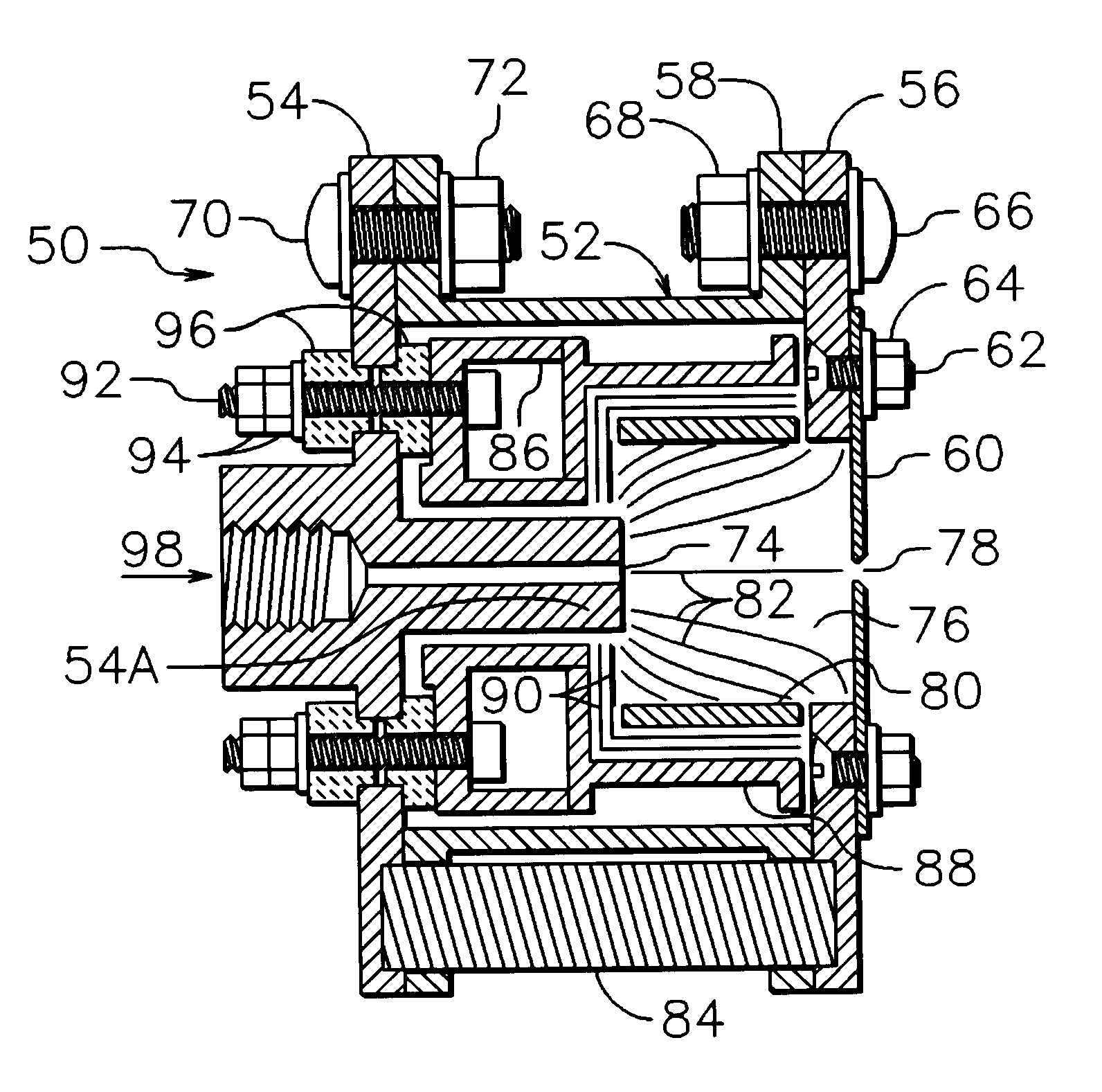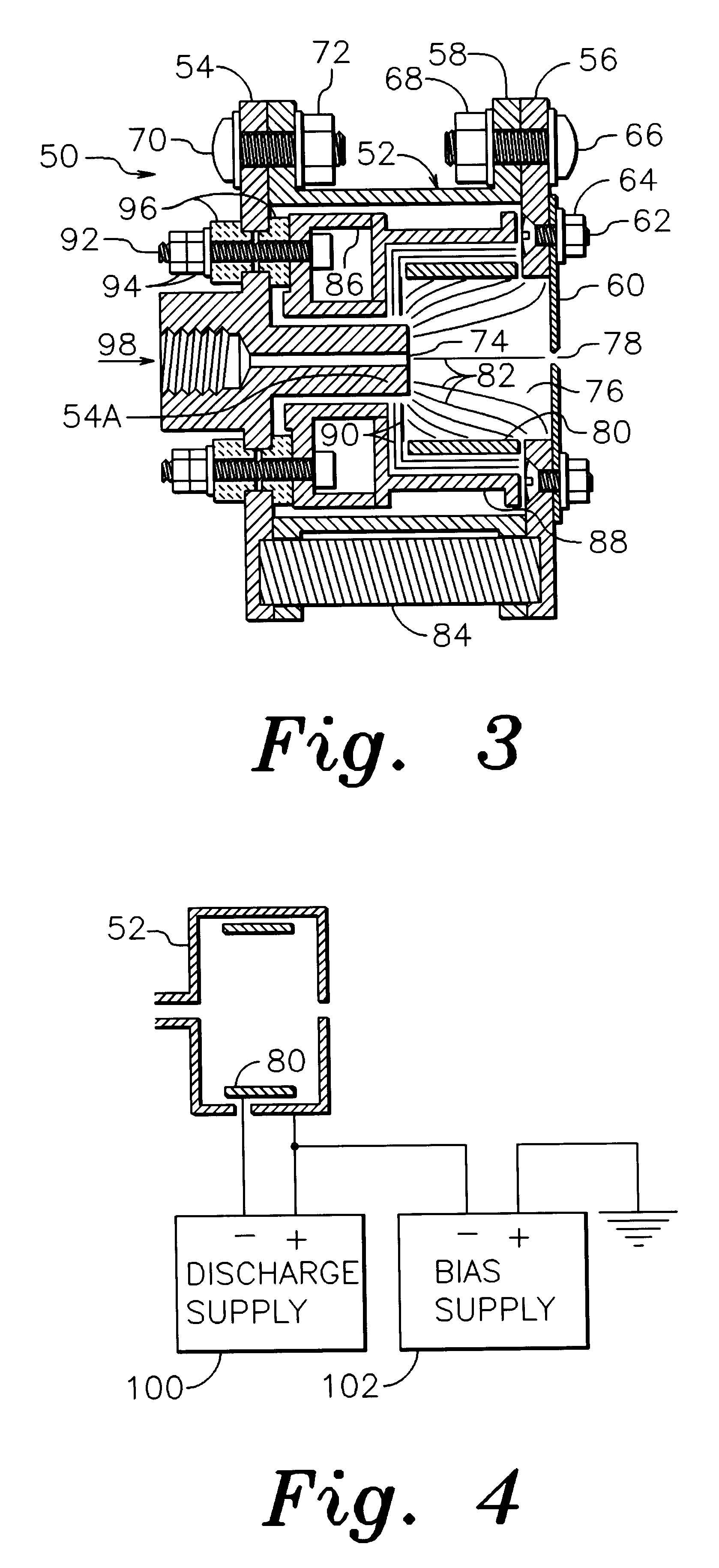Closed drift hollow cathode
a hollow cathode and closed-drift technology, which is applied in the manufacture of electrode systems, electric discharge tubes/lamps, magnetic discharge control, etc., can solve the problems of localized thermal damage, poor utilization of emissive materials in inserts, and the practical limit of the diameter increase that can be used, so as to avoid excessive and damaging increases in electron emission
- Summary
- Abstract
- Description
- Claims
- Application Information
AI Technical Summary
Benefits of technology
Problems solved by technology
Method used
Image
Examples
specific example
As a specific example of operation, a configuration similar to that shown in FIG. 7 was used with an electrical circuit similar to that shown in FIG. 4. The aperture plate 60 was made of tantalum and pole pieces 54 and 56 were made of low carbon steel. Outer shell 58 and structural members 110 and 112 were made of nonmagnetic stainless steel. The drawing in FIG. 7 is approximately to scale. There were eight alnico 5 magnets distributed uniformly around the circumference and the aperture 78 had a diameter of 1.5 mm. With an argon gas flow of 7 sccm (standard cubic centimeters per minute) and a 2 ampere, 38 volt discharge, the emission was 1.0 ampere at a bias voltage of 50 volts. A metallic plate was used to collect the electron emission. The bias voltage may appear high, but it is normal for the bias voltage to be higher when the electron conduction is to a metallic electrode instead of a plasma. Erosion measurements of the cathode insert indicated an expected lifetime of hundreds o...
PUM
 Login to View More
Login to View More Abstract
Description
Claims
Application Information
 Login to View More
Login to View More - R&D
- Intellectual Property
- Life Sciences
- Materials
- Tech Scout
- Unparalleled Data Quality
- Higher Quality Content
- 60% Fewer Hallucinations
Browse by: Latest US Patents, China's latest patents, Technical Efficacy Thesaurus, Application Domain, Technology Topic, Popular Technical Reports.
© 2025 PatSnap. All rights reserved.Legal|Privacy policy|Modern Slavery Act Transparency Statement|Sitemap|About US| Contact US: help@patsnap.com



